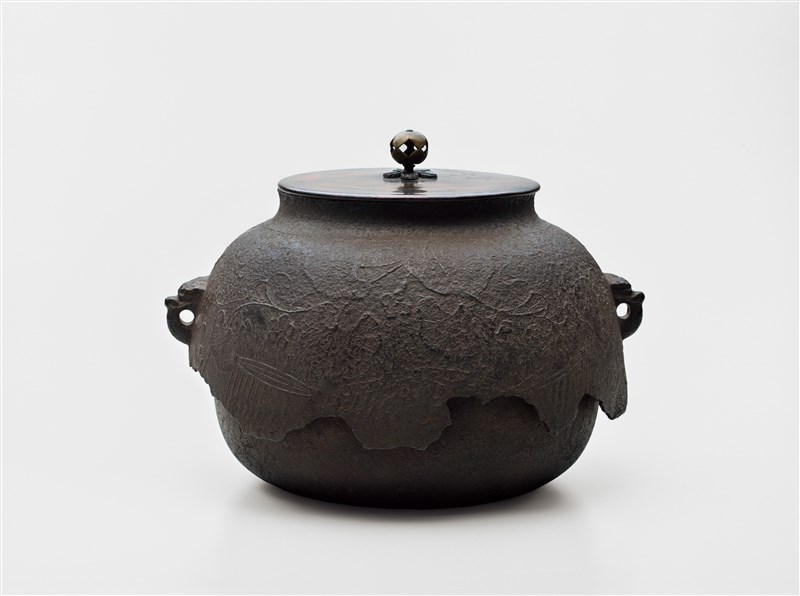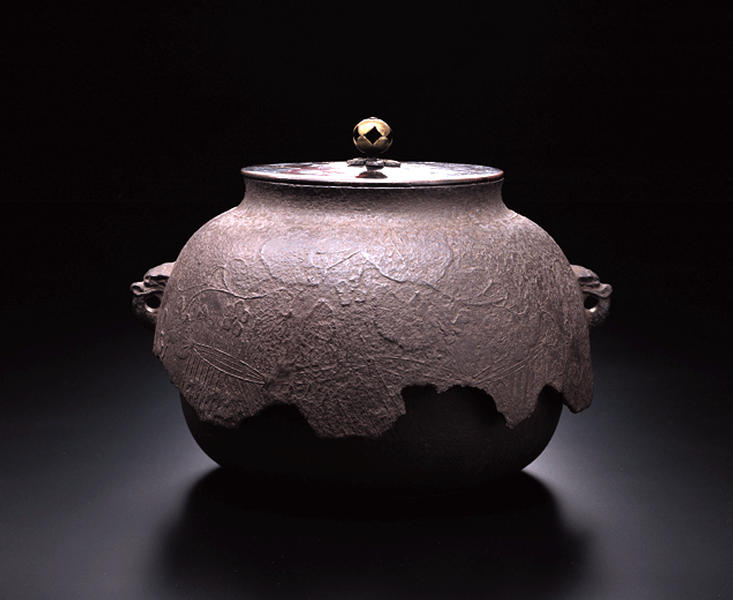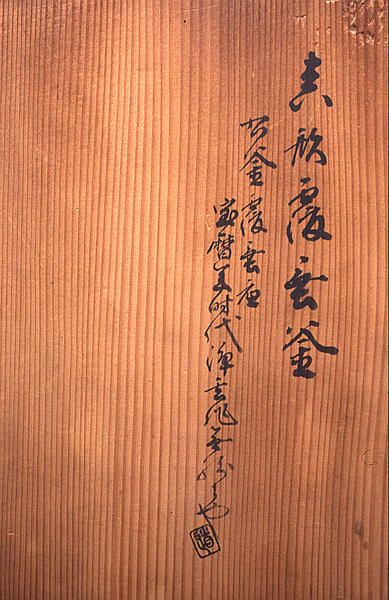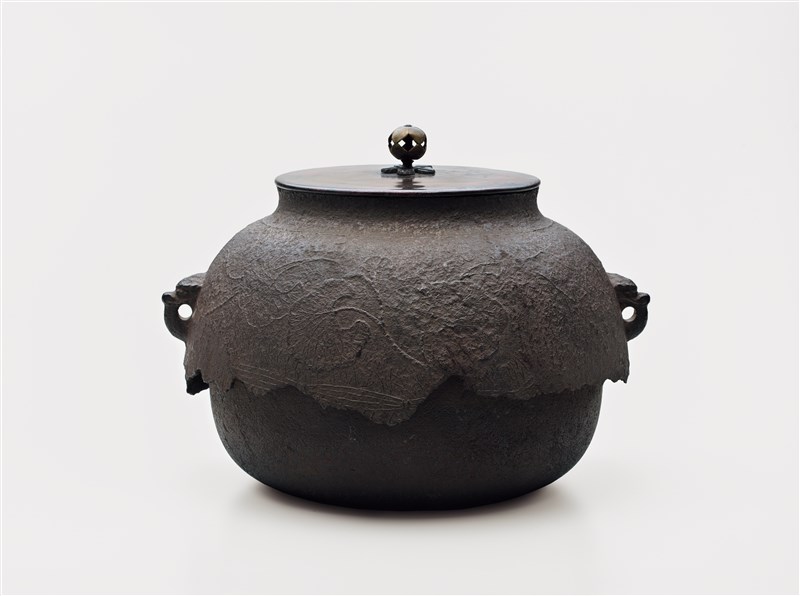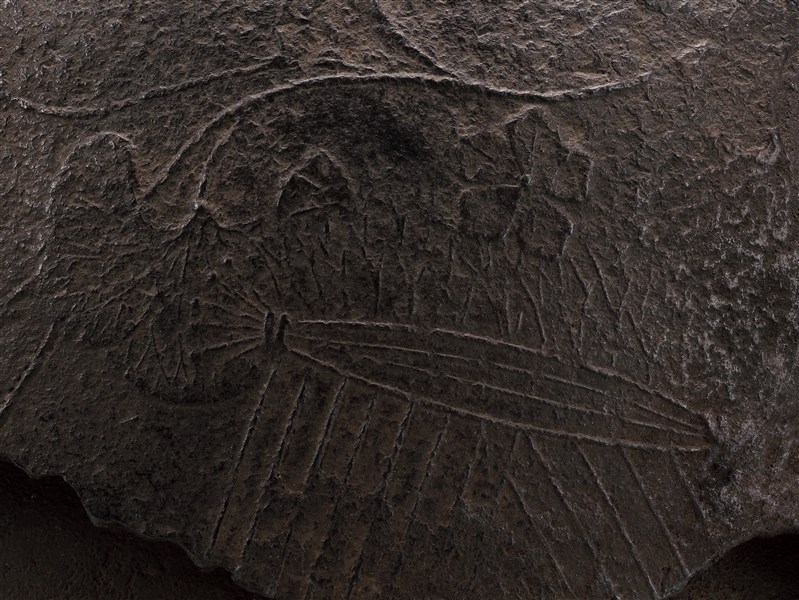夕顔図真形釜
- 福岡県・芦屋
- 室町時代(一五世紀)
- 鋳鉄製
- H-17.5 D-28.3
室町時代前期 15世紀
高:17.5cm 胴径:28.3cm
口造りは繰口であるが,とくに基部での繰り込みが強い。肩から胴へと裾広がりにふっくらとした線を描き,肩下かなり低い位置に鬼面鐶付をつける。胴下部に柴垣をめぐらして,その上方に蔓をのばす夕顔を繊細な抑揚のある線によって表している。本来は真形釜であったが,底が痛んだため,胴の下方を打ち欠き尾垂とし,新たに作った底を嵌め込んでいる。江戸時代の茶人は名釜を大切にするとともに,この打ち欠いた様子にも美を求め,「尾垂釜」という名称をつけた。
芦屋釜は福岡県遠賀郡の遠賀川河口にある芦屋の地で製作された喫茶専用の釜で,真形と呼ばれる端正な形姿,雄勁な鬼面鐶付をつけること,なめらかな鉄の地肌に文様を表すことなどが一般的な特徴にあげられるが,この釜もそうした特徴をよく表している。図版62の霰地梅竹文真形釜と比べると肩の張りがほとんどなく,胴が総体に丸みをおびていることなどから,それよりも古様で,室町時代前期の作と考えられる。 (原田)
Catalogue Entry
Muromachi period, 15th century
Ashiya, cast iron
Height, 17.5cm; torso diameter, 28.3cm
The mouth-neck area of this kettle is in the reel shape, and there is a particularly sharp curve at the base of this reel form. The swell from shoulder to waist is expansive, and the two demon mask-shaped handle lugs are placed relatively low, beneath the shoulder of the form. A brushwood fence pattern surrounds the lower edge of the main body, and a delicately undulating line of yugao (evening glory) vines runs along the top of this fence. Originally this was a shin-shaped standard form of kettle, but its base became damaged, and a new base was fitted under the remaining hanging tails of its original lower half. Tea masters of the Edo period highly revered famous kettles, and they sought beauty in this broken-edged form, calling this type of kettle a "hanging tail kettle."
Ashiya kettles were made specifically for the tea ceremony in the Ashiya area at the mouth of the Onga river in present-day Onga gun, Fukuoka prefecture. The shin-shaped, or formal-shaped, kettle is characterized by its regularity of form, vigorously expressed demon-mask handle lugs, and the depiction of decorative motifs on the pithy iron surface. This kettle is a fine example of these characteristics. Compared to the hail-stone ground kettle with plum and bamboo motifs seen in cat. No. 62, there is almost no swell at the shoulders, and the torso forms a round band around the entire structure. These elements show an older style than the plum-bamboo kettle and hence indicate a production in the early Muromachi period. KH
